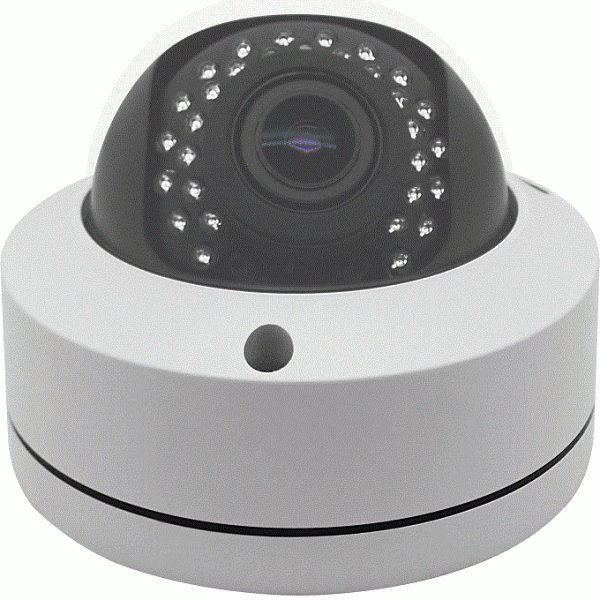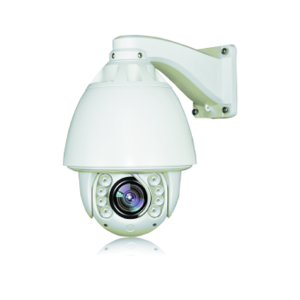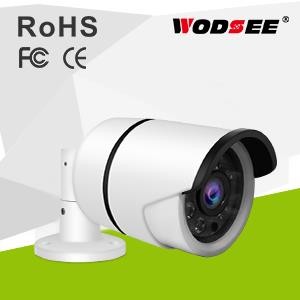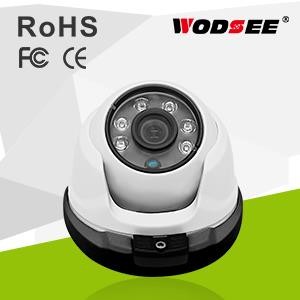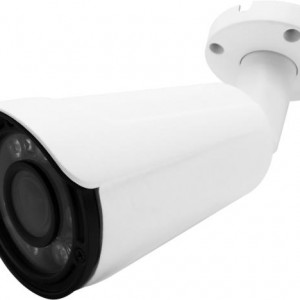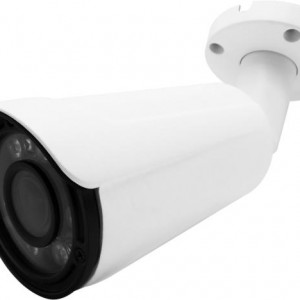Latest Cctv Camera Technology
Product Details
Latest cctv camera technology
Network camera Features :
With Built in POE
Metal Housing, Vandalproof
Lens: 2.8-12mm fixed lens
Package: 12pcs/carton (carton size: 59cm×38.5cm×40cm)
Compatible with Hikvision Private Protocol
Smart Low Illumination; Smart ROI(4 ROI region)
Free P2P; ONVIF2.4; BLC; 3D-DNR; DEFOG; DWDR
Support auto IR-CUT filter removal function/ICR
Support: Milestone, NUUO, AXXON, igifort,avigilon
Scenarios:
Apply to roads, warehouses, underground parking and other place which required definition picture quality.
Specification:
| Model | WIP130-CET25 | WIP20A-CET25 | WIP20B-CET25 | WIP20C-CET25 | WIP400-CET25 | WIP20S-CET25 | |
| Image Sensor | Hi3518EV200 | Hi3518EV200 | Hi3518EV200 | Hi3516CV300 | Hi3516D | Hi3516CV300 | |
| Main processor | AR0130C | SC2135 | IMX323 | SONY323 | OV4689 | SONY290 | |
| Resolution | 1.3mp | 2.0mp | 2.0mp | 2.0mp | 4.0mp | 2.0mp | |
| Day/Night | ICR | ||||||
| Min.Illumination | Low LUX: 1.0LUX(Color) 0.1LUX (B&W) | Low LUX: 1.0LUX(Color) /0.1LUX (B&W) | Low LUX: 0.1LUX(Color) /0.01LUX (B&W) | Low LUX: 0.1LUX(Color) /0.01LUX (B&W) | Low LUX: 0.6LUX(Color) /0.08LUX (B&W) | Low LUX: 0.1LUX(Color) /0.01LUX (B&W) | |
| Lens | 2.8-12MM | 2.8-12MM | 2.8-12MM | 2.8-12MM | 2.8-12MM | 2.8-12MM | |
| IR LED | 5X30pcs | 5X30pcs | 5X30pcs | 5X30pcs | 5X30pcs | 5X30pcs | |
| IR Distance | 25M | 25M | 25M | 25M | 25M | 25M | |
| White Balance | Manual/Automatic | ||||||
| OSD | YES | ||||||
| Electronic Shutter | 1/2000 ~ 1/1000 | ||||||
| VIDEO | |||||||
| Compression | H.264 | H.265/H.264 | |||||
| Max Image Resolution | 1280*960 | 1920*1080 | 1920*1080 | 1920*1080 | 4.0MP(2560×1440) | 1920*1080 | |
| Frame Rate | 12–25FPS ( Adjustable) | 12–25FPS ( Adjustable) | 9–16FPS ( Adjustable) | 7–30FPS ( Adjustable) | 4MP @20 FPS, 2MP @30FPS, 1~30 FPS adjustable | 7–30FPS ( Adjustable) | |
| Bit Rate | 100Kpbs~6Mpbs(Adjustable) | 200Kpbs~5Mpbs(Adjustable) | 200Kpbs~5Mpbs(Adjustable) | 200Kpbs~8000kpbs(Adjustable) | |||
| AUDIO(Optiona) | |||||||
| NETWORK | |||||||
| Protocol | TCP/IP, HTTP, DHCP, DNS, DDNS, UDP,RTSP, PPPoE, SMTP, NTP, UPnP, FTP,etc | ||||||
| Compliance | ONVIF 2.4 | ||||||
| PC Client & Browser | UC2, IE,seetong | ||||||
| Mobile Phone | iPhone,iPad,Android Mobile | ||||||
| INTERFACE | |||||||
| Video Output | RJ45 | ||||||
| LAN | 1 RJ45 10/100 ethernet port | ||||||
| GENERAL | |||||||
| Working Temperature | -10 C ~ + 50 C | ||||||
| Working Humidity | 0% ~ 90% | ||||||
| Power Supply | DC12V ,1A | ||||||
| Dimension | 166×110(H)mm | ||||||
| Weight | 1.2kg/pcs | ||||||
FAQ:
1.What is the characteristic of data transmission in network video surveillance system?
Network video surveillance system data flow is large, high real-time requirements. Generally single 25 frames/sec CIF format image stream size of about 384Kbps; single 25 frames / sec DI format image stream size of 384-1500Kbps, the average stream is 900Kbps, single 25 frames / second 720P format Image stream size of 1500-2500Kbps, the average bit stream for the 2000Kbps; In different industries, the user for the required image real-time, fluency requirements are different, according to the actual situation and specific problems.
2.How does the network video surveillance system support alarm linkage and video recording at the same time?
Alarm linkage in general can be divided into front-end alarm linkage, platform alarm linkage, the client alarm linkage. Alarm event triggered by the sound, light, electricity and other alarm output device in the front of the direct output of the alarm message can also trigger the front of the alarm video; platform to receive alarm information can trigger the platform after the alarm linkage: send the alarm message and customer mail, linkage Center video; client received an alarm signal can be immediately reflected in the client’s interface to the customer that an alarm event occurred.
3..What areas can network video monitoring apply to?
Mainly used in road monitoring, residential & community monitoring, Internet bar monitoring, education, health care, energy, safe city and other industries and home users.
4.How do I estimate the storage size?
Choosing the right storage for a video monitoring solution, you first need to estimate the storage capacity requirements. According to the current mainstream compression method is calculated as follows:
H.264 compression: 720P resolution, real-time 25 frames 33G/day
H.264 compression: D1 resolution, real-time 25 frames, 16.2G/day
H.264 compression: HAFL D1 clarity, real-time 25 frames, 300M/hour/channel;
H.264 compression: CIF resolution, real-time 25 frames, 200M/hour/channel;
The following is the video frequency and the storage time to measure the video data storage capacity;
From this table we can basically estimate the type of device that needs to store image resolution in a video surveillance project. For example, a bank needs a D1 video surveillance system, 7 * 24 hours monitoring, data storage can be covered for 3 months, then the total capacity requirements of 1.1TB.
It is possible to use a fixed rate frame frame storage technique, such as a 25-frame/S video file for one month, to reduce it to 15 frames / S without affecting the recording of the recorded information. This can save a lot of storage space.
Company news:
Simulated human retina
Significant progress in face recognition technology research
Carnegie Mellon University has just released its latest research on face recognition, and its improved algorithm can extract and encode key information from the picture, which means that facial information can be extracted quickly from the crowd. At present is the most popular face recognition of one of the entrepreneurial direction, Carnegie Mellon University’s technology research will play a great role in promoting on the application of industry.
Whether to extract facial information in the vast crowd, or to identify distant/small objects in the larger picture, the computer vision graphics poses a great challenge. With years of technology accumulation, the research teams from Carnegie Mellon University finally found the trick — the key to successful identification of small objects is to find a larger object that matches it.
This improved algorithm, which is able to extract and encode key information from the picture, is developed by associate professor Deva Ramanan and doctoral student Peiyun Hu, which is a significant step forward in identifying micro-face.

In the baseline test set of the face, the previous method can only identify the correct human face between 29% to 64%, and their proposed improved version of the algorithm reduces the two results in error privacy, thereby improving the correctness rate to 81%.
“It’s like looking for a toothpick in someone’s hand,” Ramanan said. “You can see it very easily when you suggest that the object may use the toothpick. The position of the finger, the movements and positions of the hand, provide a very important clue to our eventual finding of this toothpick.
In order to find those who have only a few pixels of the face. Similarly, in order to search for the facial, the body or the crowd photograph in the larger photograph can provide many clues.
For the extraction of micro-face has a broad application prospects, such as the number of statistical population and so on. And the demand for extension to the micro-objects increasingly prominent, take the autopilot car when the speed is faster and faster, it is necessary to always monitor and assess the traffic situation, the need for distant objects to be fully and correctly identified in order to make Correct response.
Ramanan indicates that it is not a new concept to help identify objects through auxiliary information. However, it is difficult to articulate and express this intuition in a practical system. This is because the encoding of associated information usually involves “high latitude descriptions”, which contains a lot of information but is very troublesome to use.
The method he and Hu developed was to use the “Foveal Descriptors”, which simulates the human visual structure to encode the associated information. The foveal is the most sensitive area of vision (color discrimination, resolution) in the retina, which provides clear details for the small area of the picture, and the surrounding area is blurred.
By blurring external images, the Foveal Descriptors provides sufficient associated information to help understand the content shown in this area with high focus, and greatly reducing the computational burden. In this way, Hu and Ramanan’s systems are able to find and confirm the presence of faces in graphics blocks with fewer pixels.

Simply adding a picture’s resolution may not be the best solution for finding a miniature object. With the high resolution that brings “where” s Waldo problem, the target object contains a large number of pixels, and is extremely likely to be lost in pixels. In this case, making full use of the associated information can help the system focus on the image blocks that contain the face. In addition to the associated information mentioned above, Ramanan and Hu indicate that it is very difficult to use the detector to find the face in the image area with a few pixels if the nose is detected several times in the same image area. So they have trained multiple independent detectors for different sizes, which greatly improves the ability to detect miniature objects.
The International Conference on Computer Vision and pattern recognition (CVPR 2017) will be held in Honolulu, the capital of Hawaii, from July 21th to 26th this year, and the research team will publish detailed reports. The current network version of the report has been released, Lei Feng Network will continue to focus on the follow-up dynamics.
In order to conform to this trend, Wodsee launched Face Detection NVR in the last year, with PoE function and Cloud storage. At CPSE Beijing 2016, our customers show great interest in it.

●NVR detect face and save face data automatically. Face snapshot can be taken during the time. ●Playback support local searching face data and playback whatever face you wanna check. It’s easy to find playback video through face data.
●Snapshot & alarm can be uploaded to dropbox and google drive automatically.
WODSEE is one of the best WIPS20-CET25 IP Surveillance Camera IP Camera App support Starvis H.265/H.264 IP Camera manufacturers and suppliers and we have one of the famous brands. You can buy or wholesale high quality and newest products with CE certification from our factory.
Hot Tags: best brands buy CE certification factory high-quality latest cctv camera technology manufacturers newest suppliers wholesale




